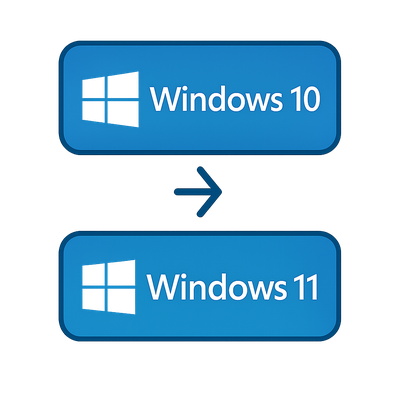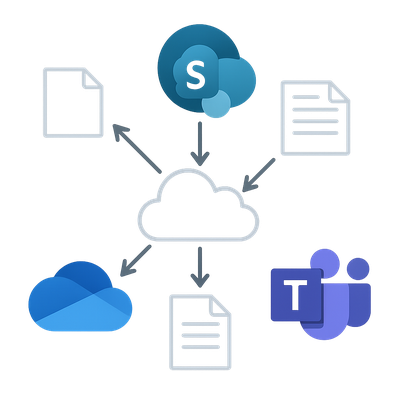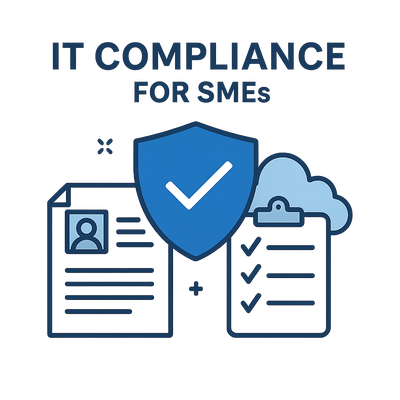
By Geek - October 2025
After a decade of service, Microsoft officially ended support for Windows 10 on October 14, 2025. For businesses still running Windows 10 devices, this milestone represents a major shift in the IT landscape. Without ongoing updates, security patches, or technical assistance, systems running Windows 10 will become increasingly vulnerable and less compliant over time.
What End of Support Means
End of support (EOS) means that Microsoft no longer provides security updates, bug fixes, or technical support for Windows 10. While computers will continue to operate, they will no longer receive the critical updates needed to defend against new security threats or maintain compatibility with modern applications.
For businesses subject to compliance frameworks such as ISO 27001, SOC 2, or the Australian Cyber Security Centre (ACSC) Essential Eight, continuing to use unsupported operating systems may lead to non-compliance and increased cyber risk.
Why Microsoft Ended Support
Windows 10 was released in 2015 and became one of Microsoft’s most widely adopted operating systems. Over its life, it received multiple feature updates and security improvements. However, as hardware and software technologies evolve, maintaining older platforms becomes increasingly difficult. Microsoft has shifted focus to Windows 11, which provides deeper security integration, modern hardware optimisation, and a redesigned management model suitable for hybrid work environments.
“Unsupported systems don’t fail overnight, they gradually become security liabilities and productivity bottlenecks.”
The Risks of Continuing to Use Windows 10
Running unsupported systems in a business environment carries several risks:
- Security vulnerabilities: New exploits targeting outdated systems will remain unpatched, leaving data exposed.
- Software incompatibility: New versions of Office, browsers, and third-party applications may no longer install or function properly.
- Compliance failures: Operating unsupported software may breach data protection or cybersecurity obligations.
- Increased maintenance costs: IT teams spend more time troubleshooting aging systems that no longer receive official updates.
Transition Options for Businesses
Businesses have three main options to remain secure and productive after Windows 10 end of support:
Option 1: Upgrade to Windows 11
For most organisations, upgrading to Windows 11 is the simplest and most secure path forward. Windows 11 introduces stronger hardware-based security through Trusted Platform Module (TPM 2.0), improved encryption, and integration with Microsoft Entra ID (formerly Azure AD) for identity management. The user interface is designed for hybrid work, and cloud integration with OneDrive and Teams is built in.
Before upgrading, verify that existing hardware meets Windows 11’s system requirements. Many older PCs may require replacement or BIOS updates to support TPM and Secure Boot features.
Option 2: Extended Security Updates (ESU)
Microsoft offers an Extended Security Update (ESU) program for businesses unable to transition immediately. This paid service delivers critical security updates for up to three additional years, ending in October 2028. ESU provides temporary relief while organisations plan and execute a full migration strategy, though it does not include new features or performance enhancements.
Option 3: Move to Cloud-Based Environments
Another viable option is adopting Windows 365 or Azure Virtual Desktop. These cloud-based solutions provide virtual Windows environments accessible from any device, offering flexible access control and simplified management. Cloud desktops reduce on-premises maintenance and ensure that systems remain up to date automatically.
Preparing for Migration
Transitioning from Windows 10 to newer systems involves careful planning and testing. A successful migration plan includes:
- Hardware assessment: Identify which devices meet Windows 11 requirements and which need replacement.
- Application compatibility testing: Verify that critical business software runs smoothly in Windows 11 or virtual environments.
- Data backup and recovery: Ensure data integrity before migration using reliable backup solutions.
- Deployment strategy: Roll out upgrades in phases to reduce downtime and allow time for user feedback.
- Training and change management: Educate staff about the new interface, features, and best practices to ease transition.
The Benefits of Upgrading
Upgrading to Windows 11 or a cloud-based environment brings long-term benefits:
- Enhanced device security with hardware-based protection and stronger encryption.
- Improved performance and efficiency, especially on modern processors.
- Better integration with Microsoft 365 services like Teams, SharePoint, and OneDrive.
- Streamlined management through cloud-based tools like Intune and Microsoft Endpoint Manager.
Windows 11 also introduces intelligent AI-powered features such as Microsoft Copilot, which enhances productivity by integrating AI suggestions into Office apps and Windows itself.
Common Pitfalls to Avoid
- Delaying upgrades until security incidents force action.
- Overlooking device compatibility and ending up with hardware that cannot run Windows 11.
- Failing to plan backups before migration, risking data loss.
- Neglecting staff training, which leads to reduced productivity post-upgrade.
Long-Term IT Strategy Beyond Windows 10
End of support is an opportunity to modernise your IT infrastructure. Consider standardising hardware, adopting centralised management, and leveraging cloud solutions for scalability and resilience. A consultant can help design a long-term strategy that aligns with your growth, security, and compliance requirements.
“Migrating away from Windows 10 is not just an upgrade, it’s a chance to modernise how your business works.”
How Can We Help You?
We help businesses navigate the end of Windows 10 support with minimal disruption. We assess your current hardware and software, recommend the right upgrade path, and manage the entire migration from planning to deployment. We handle licensing, data transfer, application testing, and user training to ensure a smooth transition to Windows 11 or cloud-based solutions. By working with us, your business stays secure, compliant, and ready for the future of productivity.







